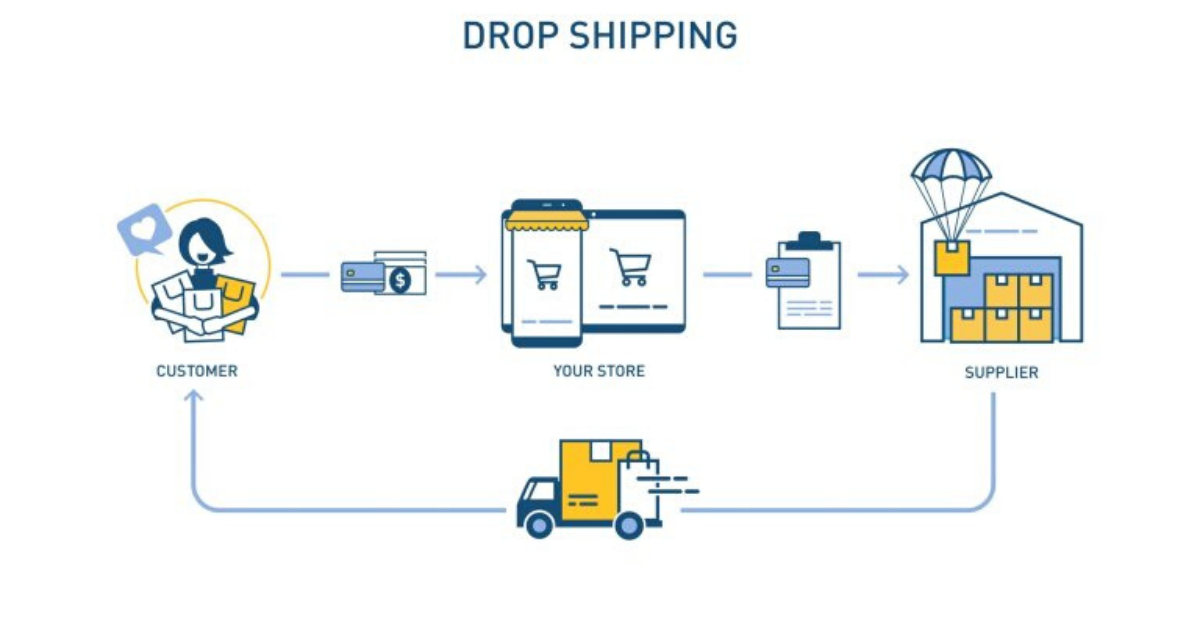Is Dropshipping a Profitable Business Model?
In recent years, dropshipping has emerged as one of the most popular business models for aspiring entrepreneurs. With its low startup costs, minimal risk, and the ability to operate from anywhere in the world, it’s no wonder that many are drawn to this e-commerce strategy. But the burning question remains: Is dropshipping truly a profitable business model? Let’s dive into the details to uncover the potential, challenges, and key factors that determine the profitability of dropshipping.
What is Dropshipping?
Dropshipping is a retail fulfillment method where a store doesn’t keep the products it sells in stock. Instead, when a store sells a product, it purchases the item from a third-party supplier and has it shipped directly to the customer. This means the seller never handles the product directly, eliminating the need for inventory management, storage, or large upfront investments.
The Appeal of Dropshipping
- Low Startup Costs: Unlike traditional retail businesses, dropshipping requires minimal upfront investment. You don’t need to purchase inventory or rent a warehouse, making it an accessible option for entrepreneurs with limited capital.
- Flexibility: Dropshipping allows you to run your business from anywhere with an internet connection. This flexibility is particularly appealing to digital nomads and those seeking a location-independent lifestyle.
- Wide Product Selection: Since you don’t need to pre-purchase inventory, you can offer a vast range of products to your customers without worrying about unsold stock.
- Scalability: With no physical inventory to manage, scaling a dropshipping business is often easier than traditional retail. You can focus on marketing and customer acquisition without the logistical headaches of managing stock.
Is Dropshipping Profitable?
The short answer is: Yes, dropshipping can be profitable, but it’s not a guaranteed path to riches. Like any business model, its profitability depends on several factors, including your niche, marketing strategy, supplier relationships, and execution. Here’s a closer look at what influences the profitability of dropshipping:
1. Niche Selection
Choosing the right niche is critical to your success. A profitable niche is one with high demand, low competition, and products that offer good profit margins. For example, trending products in health, fitness, or eco-friendly categories often perform well. Avoid oversaturated markets like generic phone accessories unless you have a unique angle.
2. Supplier Reliability
Your suppliers play a crucial role in your business’s success. Poor-quality products, slow shipping times, or unreliable suppliers can lead to negative customer reviews and lost sales. Platforms like AliExpress, Oberlo, and Spocket are popular for finding suppliers, but it’s essential to vet them thoroughly.
3. Marketing Strategy
Effective marketing is the backbone of a profitable dropshipping business. Since you’re not dealing with inventory, your primary focus should be on driving traffic and converting visitors into customers. Successful dropshippers often leverage:
- Social Media Advertising: Platforms like Facebook, Instagram, and TikTok are powerful tools for targeting specific audiences.
- Search Engine Optimization (SEO): Optimizing your store for search engines can drive organic traffic and reduce reliance on paid ads.
- Influencer Marketing: Partnering with influencers in your niche can help you reach a broader audience.
4. Customer Experience
In the competitive world of e-commerce, customer experience can make or break your business. Fast shipping, responsive customer service, and a seamless return policy can set you apart from competitors. Remember, happy customers are more likely to leave positive reviews and become repeat buyers.
5. Profit Margins
One of the biggest challenges in dropshipping is maintaining healthy profit margins. Since you’re competing with other sellers offering similar products, pricing can become a race to the bottom. To combat this, focus on adding value through branding, bundling products, or offering exclusive deals.
Challenges of Dropshipping
While dropshipping has its advantages, it’s not without challenges. Here are some common pitfalls to watch out for:
- Low Profit Margins: Intense competition can drive prices down, squeezing your profits.
- Shipping Complexities: Long shipping times, especially with international suppliers, can lead to customer dissatisfaction.
- Supplier Issues: Relying on third-party suppliers means you have less control over product quality and inventory levels.
- Customer Retention: With so many options available online, retaining customers can be difficult unless you offer exceptional value.
Tips for Building a Profitable Dropshipping Business
- Research Your Niche: Use tools like Google Trends, Amazon Best Sellers, and keyword research to identify profitable niches.
- Focus on Branding: Create a unique brand identity to stand out from competitors. A memorable brand can justify higher prices and build customer loyalty.
- Optimize Your Store: Ensure your website is user-friendly, mobile-responsive, and optimized for conversions.
- Test and Iterate: Continuously test different products, ad creatives, and marketing strategies to find what works best.
- Build Relationships with Suppliers: Establish strong relationships with reliable suppliers to ensure consistent product quality and timely shipping.
Conclusion
Dropshipping can indeed be a profitable business model, but it’s not a get-rich-quick scheme. Success requires careful planning, relentless effort, and a willingness to adapt to market trends. By selecting the right niche, partnering with reliable suppliers, and implementing effective marketing strategies, you can build a thriving dropshipping business. However, it’s essential to approach it with realistic expectations and a long-term mindset.
For those willing to put in the work, dropshipping offers a low-risk entry into the world of e-commerce and the potential for significant rewards. So, is dropshipping profitable? The answer lies in your ability to execute the model effectively and overcome its inherent challenges.
